#Bdx17 from barrel: Sauternes & Barsac
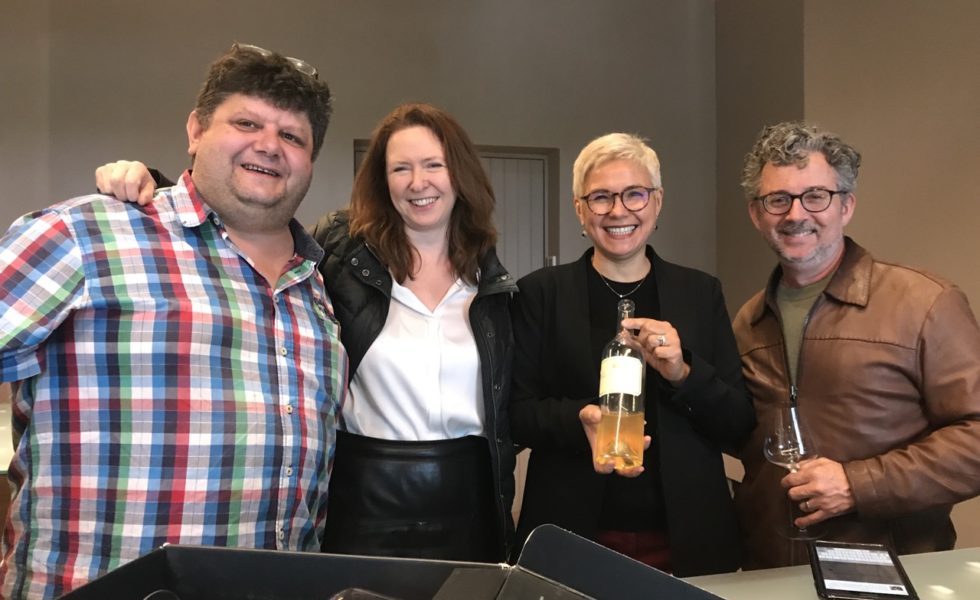
Residual sugar to the max?
By Panos Kakaviatos for wine-chronicles.com
23 May 2018
I am not sure about the overall quality of Sauternes and Barsac in 2017. Some critics have oohed and ahhed about the richness of these wines, including the super star Château d’Yquem. But I am a fan of late-harvest Bordeaux that have more verve and energy. 2017 is a vintage of richness to be sure. The balance tends towards higher-than-average residual sugars but just average to low acidities. There is ample botrytis, for most of the wines, which is a good thing.
Add to all that the issue of frost. As with other parts of Bordeaux, lower areas were the worst hit. The famous estate Château Climens in Barsac opted out of the vintage entirely. Some properties however were spared, especially warmer and more precocious vineyards: Yquem, to take a notable example, among others.
The rather hot and dry summer led to already ripe grapes by mid-August. But here’s the catch: For many, the botrytis came a bit (too) late, resulting in concentrations “at times even too much” remarked noted harvest observer (and Sauternes promoter) Bill Blatch. Indeed, at Château d’Yquem, chief winemaker and cellar master Sandrine Garbay said that the main challenge was picking grapes with enough botrytis, but not with too low relative acidity.
Some estates did better than others. Cooler terroirs in Barsac not as hit by frost seemed to convey more vivacity, as expected, and wines like Château Doisy Daëne and Château Coutet count among my favorites in 2017.
But there were strong showings from Sauternes, too – and not just Yquem. Overall, 2017 does not come across to me at least as a “great” vintage. Wines were tasted at the negociant Vintex, at the UGCB, and primarily at Château Rayne Vigneau and on location at the estates. I did not get a chance to taste Château Suduiraut, which I heard was very good – but its opening price is the same as last year’s.
One final remark: Assessing these late harvest wines at such an early stage is never easy, so the best judgment – especially with these – comes from bottle!
Top wines? Yquem, Fargues, Raymond-Lafon, Doisy Daëne, Coutet, Rieussec
As usual, wines in bold, I liked in particular. If red and bold, even more. One of these got the nirvana underline mark … guess which one.
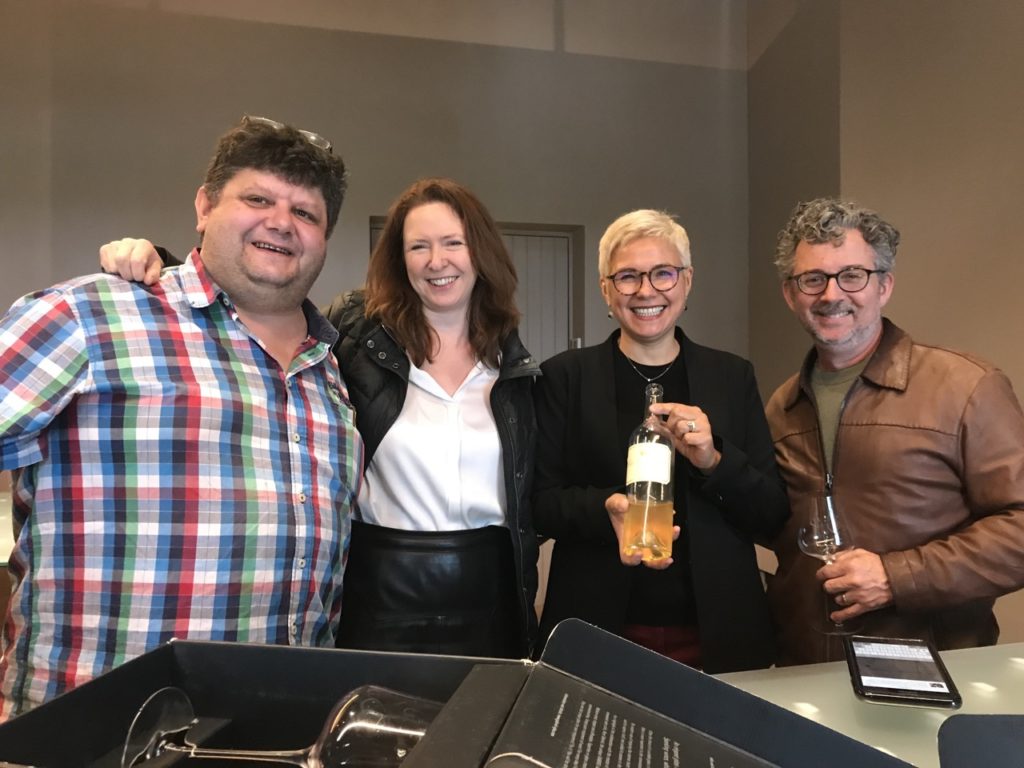
With fellow tasters – left to right – Yves Beck of Switzerland, wine author Jane Anson, and photographer and blogger Miguel Lecuona. Third from right is Yquem cellar master Sandrine Garbay.
Château d’Yquem – This sure is delicious and rich. Like biting into candied ginger! And an opulent, layered palate: what else could one expect from a wine of this calibre? But it lacks the verve of a truly great vintage, and – as estate winemaking director Sandrine Garbay explained during a tasting at Yquem on 9 April – there was “big delay” between ripening of grapes and the onset of botrytis. When you have high Brix and then delay, it gets complicated, she explained. The second picking was very high in sugar and low in acidity. “That is why we chose to start the harvest with the best terroirs to maintain the freshness,” said Garbay, stressing that those plots are not always the first picked. In 2017, they were 100% botrytized. The September rain brought that on. In any case, pickings started rather early on 16 August: all grapes were ripe for the dry white of the estate. But then came that long delay between having ripe grapes and then waiting for the botrytis. In 2017, one did not seem as much of the famous misty fog from the Ciron River, but rather thanks to rainfall in the first two weeks of September: About 60mm and the harvest began on 26 September. The first tri or picking indicated fine acidity, Garbay said. “Yes these were cooler, clay terroirs” so normally they are picked later… And the total crop was about 17 hectoliters per hectare, so no frost at Yquem. “We were strict in the blending to preserve the acidity,” she stressed. And the estate kept around 45% of the crop – about 80,000 bottles. The end result was a rather high 148 grams of residual sugar and about four grams of acidity per liter, with a pH of about 3.8. Take a look at the 2014 pH: 3.65. In fact, the pH was not such a big deal, not too high for Yquem, Garbay noted. The issue was higher than average residual sugar, which usually clocks in at 130. So lovers of richer styles of Sauternes may find their nirvana, but I am not convinced. I underline this one because it is Yquem and because this wine almost always turns out great in bottle. But it was not so easy this year to underline it! The blend is 85% Semillon and 15% Sauvignon, which is lower than usual, because they were losing their aromatic aspects (again the early ripening), and that is why more Sauvignon Blanc was declassified during blending. Interesting to note that the length of aging will be longer than usual, as this type of wine needs oak to bring structure, which is necessary to counter balance the high level of sugar: “At least 20 months in oak,” she said. 93-95+
Château Raymond Lafon – Interesting how this had less residual sugar than Yquem (135 as opposed to the 149 grams), and a bit more acidity, at 3.9 grams per liter. I liked the balance here quite a lot, with fine grip and poise, but perhaps not as bright and as vivid in expression as in other vintages? Could it be that the estate also had more limited choices due to its various plots lost to frost? The estate lost about 1/3 of its potential harvest to frost… 92-94
Tasted at Château Rayne Vigneau early April
Flight One
Château Bastor Lamontagne – This has pleasant aromas of pear and pineapple, albeit somewhat dilute and lacking punch from better vintages. There is a fruit juice feeling of lightness on the palate. Early drinking Sauternes? The botrytis spice is not so pronounced, either. 87-89
Château Fargues – This was one of the best Sauternes, but why did I get the feeling of seeing a star drummer using but one arm? Tasted on three separate occasions with similar results. Sure, it comes across as rather precise and fresh, with ground cinnamon and other botrytis spice. Far better sap on the mid palate than the above, for example, but I still feel that it lacks the energy and verve of top vintages. Here I resisted the underline nirvana level! 92-95
Château Lamothe Guignard – The nose exudes a somewhat diluted aspect, followed through with a rather aquatic palate: more like fruit juice, because it lacks energy and the spice of botrytis. 86-88
Château De Malle – Some honeyed aspects on the nose, suggesting richness. The palate is rich, too, but it seems just slightly over evolved for this very early stage: as opposed to bright white juicy peach, you get yellow peach that may be around nearly one day too much. Still, I like this sample’s density. 88-91
Château Suau – Grip on the nose, rather grapefruit like. I rather like the citrus like focus here. Touches of spice, rather elegant. This counts among those with a brighter expression, but it lacks the intensity to be a 90+ wine. 88-90
Flight Two
Château Broustet – Has some grapefruit rind on the nose. The texture is nuanced and quite enjoyable. Perhaps lacking in length? But I think this makes for a fine drink. 88-90
Château Filhot – Simple in expression and kind of short. In a word: boring.
Arche – This has again a kind of uninspired fruit juice aspect. The palate is a bit sharp, as sharp as a late harvest wine can be, as you get a bit of heat here. 86-88
Château Doisy Vedrine – Fine fresh green mint aromatics. Fine ripeness on the palate, as well, and not too warm, with nuanced flavor. One of the better wines today, but not as good as the next one … 91-93
Château Doisy Daëne – Fresh cut pineapple on the nose. Not canned. Juicy, and contoured, with fine and subtle ginger spice. Nuanced energy and length. Just lovely! 92-94
Flight Three
Château Myrat – Again: fruit juice, but at least this seems to have more punch, pardon the pun! It is livelier than many here, but it lacks enough spicy botrytis, and is rather straightforward. 89-91
Château Sigalas Rabaud – Deeper more yellow fruit, as compared to the above. A bit short on the finish, however. Lacks linearity and focus, albeit has some deep and rich fruit. 89-91
Château Rabaud Promis – Honeyed nose. Touch of mint. The palate shows some freshness and agreeable richness, too. Just lacks a bit of brightness or lift on the finish. 89-91
Château Rieussec – Subtle aromatics, albeit rich. White pepper, just really appealing! This wine has volume and density, to be sure. A touch warm on the finish? Tasted twice with similar results. 92-94
Château Guiraud – This has some spicy notes up front, a bit of ginger and black tea – botrytis! – and the palate is more nuanced than some of the others tasted here, although – again – the finish is a tad short. 90-92
Flight Four
Château Coutet – This has fine mid palate sap. Bright nose, white peach, too, and there is grip. This transcends some of the other wines here. Cool, crushed mint aromas. Long finish. Bravo! 92-94
Château Rayne Vigneau – Yellow peach. There is juiciness, albeit just a bit flabby. I like the expression of spice here, however. Not bad, but not “great” either. Actually going back to it, I like the image of biting into a juicy yellow apricot so this gets a red and bold! 90-93
Clos Haut Peyraguey – White stone fruit. Bit of mint here, too. Not as obviously juicy, but has succulence, and touches of spice. Quite nice and even succulent, with a fresh finish. 91-93
Château Lafaurie Peyraguey – This has a more chunky mid palate chewy and rich aspect than the above, but not quite as pristine or bright. You get a sense of breadth but at the expense of length. 89-92
Château La Tour Blanche – Spicy touches, and I recall enjoying this as well at Vintex, the day before. There is a pineapple aspect that come off just a tad cloying (could it be the lack of enough acidity or higher than average residual sugar?). There are nice black tea notes here however, indicating fine botrytis. Let’s see how it does from bottle. 91-93+
Category: Blog Tagged: Barsac, Coutet, Doisy Daene, Fargues, Raymond-Lafon, Rieussec, Sauternes, Yquem
 Wine Chronicles
Wine Chronicles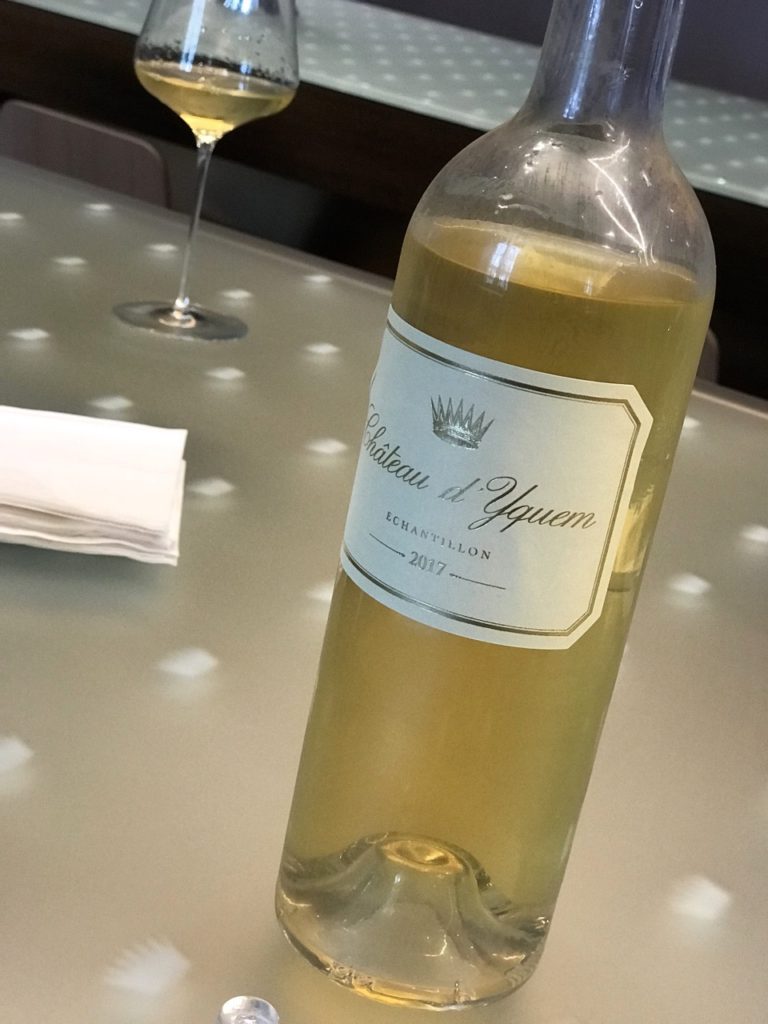
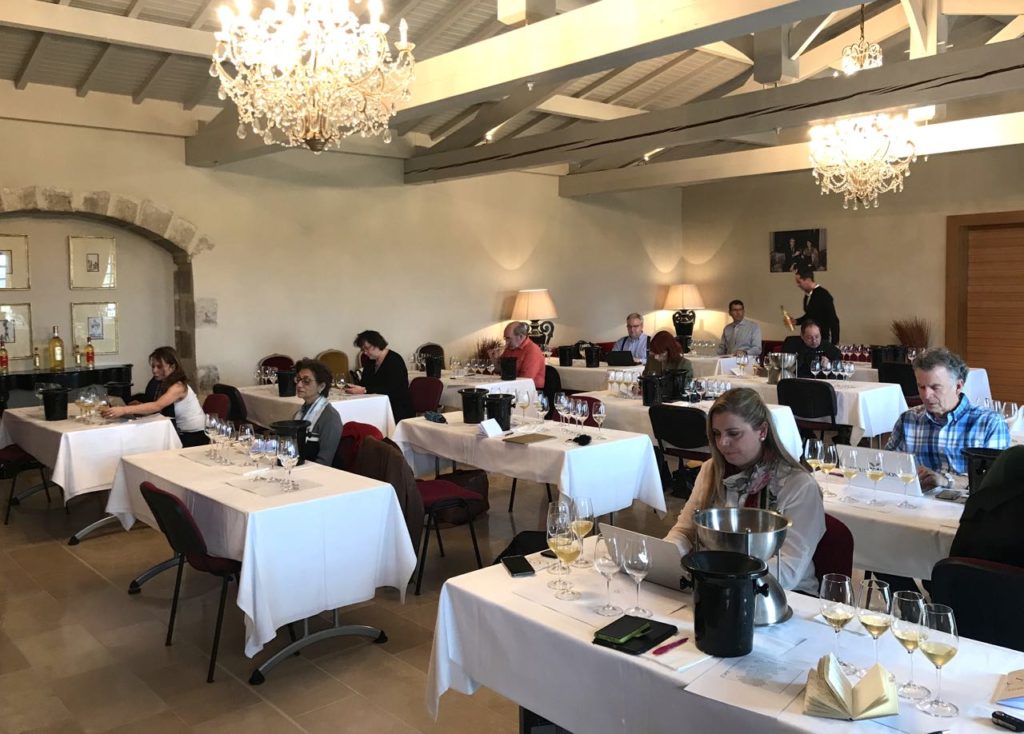
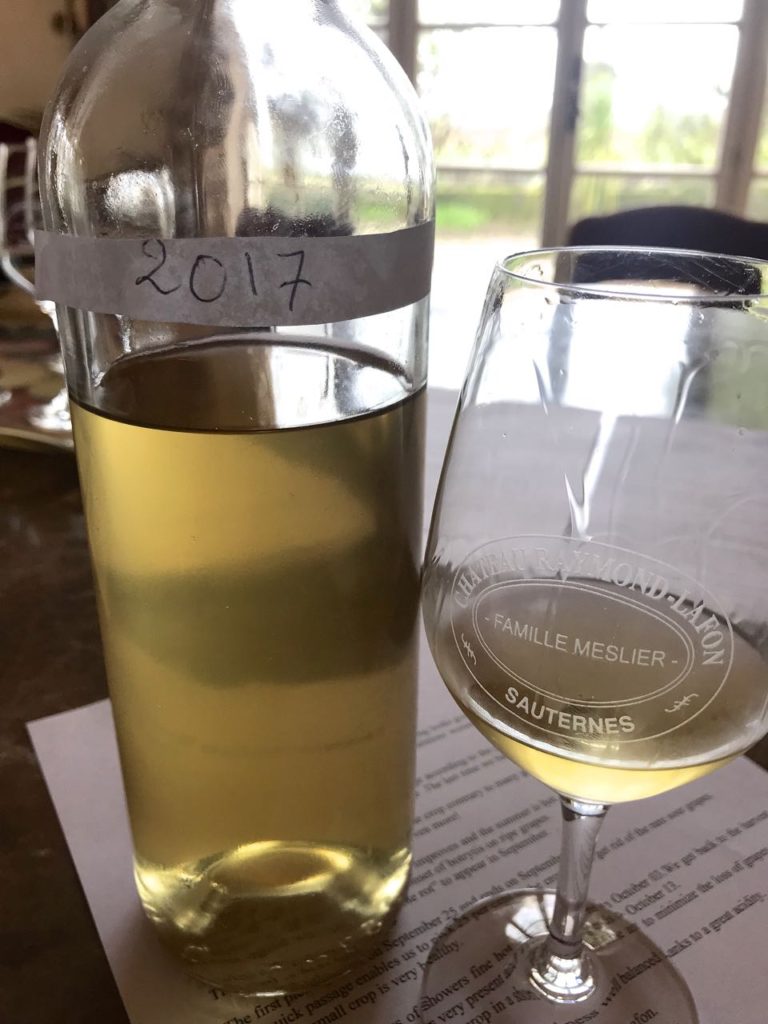
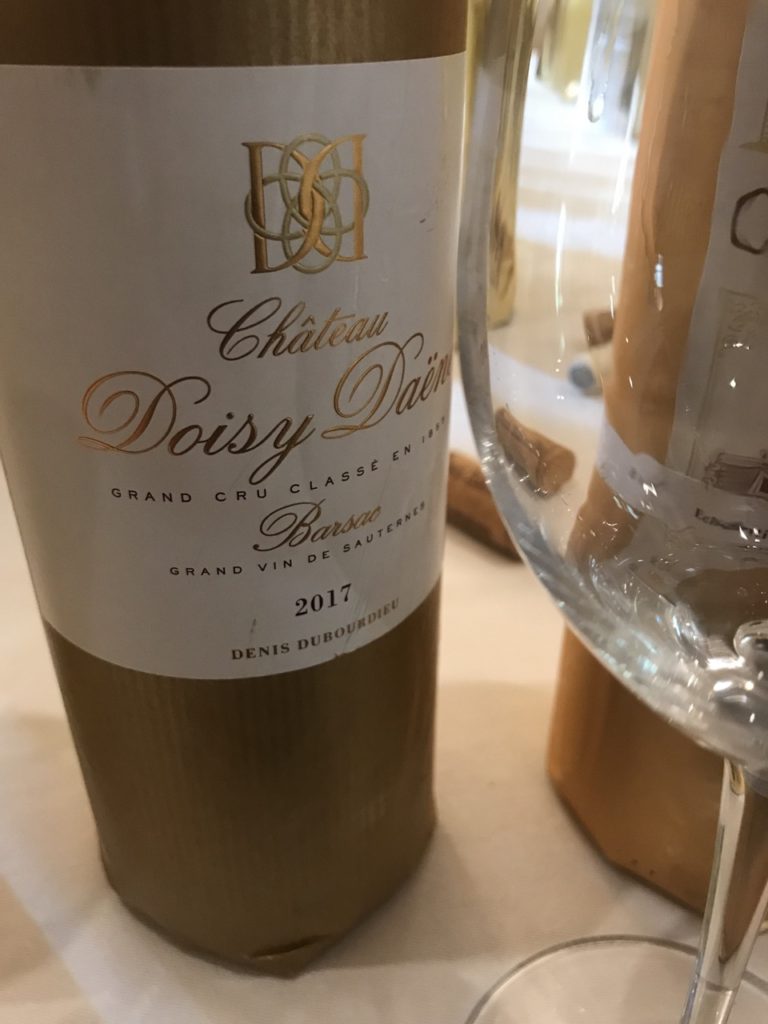
Share This